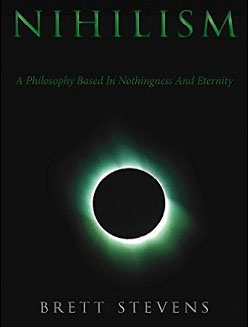More on Urban Mental Disability
Following up on a series about how city life is killing us, a brief insight into how pollution changes brain structure:
The results show that ambient benzene (per interquartile range increment of 0.30 µg m−3) is associated with elevated risks of dementia (hazard ratio, 1.18; 95% confidence intervals, 1.09 to 1.28), major depression (1.09; 1.03 to 1.14) and anxiety disorder (1.16; 1.10 to 1.22). Neuroimaging analysis highlighted the associations with brain structures, including the thalamus and the superior temporal gyrus.
Benzene, identified as a carcinogen as well as general pollutant, seems to carry with it a risk of greater mental instability. Whether this is caused by the benzene, or people with crazy can only afford to move into high-benzene areas, remains to be seen.
However, a general relationships between pollution and impaired cognition seems to be consistent:
The results demonstrate that taking an exam on a polluted day was associated with a 3.2% decline in a student’s test scores, with boys and students from low socio-economic backgrounds being most affected. Importantly, they find that this effect is evident at pollution levels below current environmental standards. The study also suggests that exacerbation of respiratory health problems, such as asthma, could be the mechanism for the negative relationship between air pollution and test outcomes.
Cities clobber us with pollution, but also perceptual overload because cities reward quick responses to chaotic situations comprised of simple elements, a surface analysis with no depth but high risk:
Our brains are constantly processing sights, sounds, and smells in the city. This “sensory overload” pushes our brains to work harder, especially in situations where we’re filtering out what’s relevant from what isn’t. When faced with an overload of stimuli, the brain has to make tough decisions on what to focus on. This kind of overdrive can lead to mental exhaustion, making it difficult for the brain to recharge and build resilience.
- Decision Fatigue: The constant decision-making in an urban setting — navigating crowds, choosing routes, or finding a quiet spot — adds to the mental load.
- Social Overload: Being around others without the ability to “switch off” can lead to emotional exhaustion, further impacting cognitive resilience.
Long-term stress from crowded environments can lead to anxiety, stress, and even depressive symptoms. The brain, trying to manage these stressors, begins to build defense mechanisms. However, if the stress becomes chronic, it can weaken cognitive resilience, making it harder to cope with new challenges and bounce back from setbacks.
“Decision fatigue” seems high enough, but “social overload” sounds like one of the issues behind Crowdism, where peer pressure converges on a lowest common denominator surface issue instead of allowing cause-effect analysis that might solve the problem.
In particular, city people like voters are known for a certain type of insanity where they adopt as solutions the same things that cause their problems, mainly because they want to manage or subsidize these problems into non-existence like they would a workplace issue.
Perhaps they merely have addled brains from pollution, stress, and social overload.
Tags: cities, decision fatigue, mental illness, social overload, urban living










